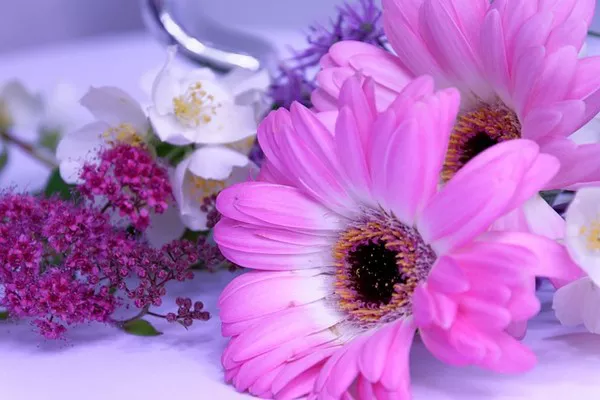Drying flowers is a timeless and cherished practice, preserving the beauty of blooms long after their natural lifespan. Whether you’re an avid gardener, an enthusiast for floral arrangements, or simply someone who wants to enjoy the beauty of flowers year-round, knowing how long it takes to dry flowers is essential. The process of drying flowers, while relatively simple, does require patience and an understanding of the various methods available. In this comprehensive guide, we will explore the different methods of drying flowers and how long each method takes to yield beautiful, preserved blooms.
Methods of Drying Flowers
Before we delve into the specifics of drying time, it’s important to understand that there are various methods to dry flowers. The choice of method depends on the type of flowers you’re working with and the final result you wish to achieve. Here are some common methods:
Air Drying
Air drying is the most straightforward and cost-effective method of preserving flowers. To air dry flowers, follow these steps:
- a. Gather a bouquet of flowers with long stems.
- b. Remove any excess foliage, ensuring only the flowers remain.
- c. Bundle the flowers together and secure the stems with twine or a rubber band.
- d. Hang the bouquet upside down in a dark, well-ventilated space.
- e. Allow the flowers to dry, which usually takes 1 to 3 weeks.
The drying time for air-dried flowers can vary depending on factors like humidity, temperature, and the type of flowers. Some delicate blooms may take longer, while hardier ones may dry quicker.
Silica Gel Drying
Silica gel is a moisture-absorbing substance that can be used to dry flowers quickly while preserving their shape and color. Here’s how to use silica gel to dry flowers:
- a. Fill a container with a layer of silica gel.
- b. Cut the stems of the flowers and remove excess foliage.
- c. Place the flowers face up in the container, ensuring they don’t touch.
- d. Gently cover the flowers with more silica gel until they are completely buried.
- e. Seal the container with an airtight lid and leave it for about 2-7 days.
Silica gel drying is notably faster than air drying and is ideal for flowers with delicate petals. The exact drying time can depend on the thickness of the petals and the type of flower.
Pressing Flowers
Pressed flowers are often used for crafts, scrapbooking, or framed art. This method involves flattening and drying flowers between two heavy objects, such as books or flower presses. Pressing flowers typically takes 2-4 weeks. However, the drying time can vary depending on the size, thickness, and moisture content of the flowers.
Microwave Drying
Microwave drying is a relatively new method for preserving flowers quickly. It involves using a microwave-safe container filled with silica gel. The flowers are placed in the container, and short bursts of microwave energy are used to remove moisture. The exact drying time with this method can vary significantly, but it typically ranges from a few minutes to an hour, depending on the flower type and microwave settings.
Oven Drying
Oven drying is another rapid method for drying flowers, especially when you want to maintain their color. Here’s how to do it:
- a. Preheat your oven to 200°F (93°C).
- b. Remove excess foliage and cut the flower stems.
- c. Place the flowers on a baking sheet, ensuring they don’t touch.
- d. Put the flowers in the oven and leave the door slightly ajar.
- e. Check the flowers every 30 minutes until they are fully dried, which typically takes 1-4 hours.
Oven drying is a quick method but requires careful monitoring to prevent overheating and discoloration.
Factors Influencing Drying Time
While the methods described above provide general timeframes, several factors can influence how long it takes to dry flowers:
Flower Type: Different flowers have varying moisture levels, petal thickness, and shapes, affecting the drying time. Delicate flowers like roses and lilies may take longer, while hardy varieties like lavender and strawflowers may dry quickly.
Humidity: High humidity can slow down the drying process, while low humidity accelerates it. Consider the climate of your location when drying flowers.
Temperature: The ambient temperature in the drying area can influence the time it takes for flowers to dry. A warmer environment generally speeds up the process.
Flower Size: The size of the flowers matters. Larger blooms generally take longer to dry than smaller ones.
Petal Thickness: Flowers with thick petals, like roses, may take longer to dry compared to those with thinner petals.
Drying Method: As discussed earlier, the drying method you choose significantly impacts the drying time. Methods like microwave and oven drying are faster than air drying or pressing.
Conclusion
Preserving the beauty of fresh flowers through drying is a delightful and creative endeavor. Understanding the different methods of drying flowers and the factors influencing drying time is essential to achieve the best results. The choice of method ultimately depends on your preferences, the type of flowers you’re working with, and your desired timeframe.
Whether you opt for the traditional and patient method of air drying or the faster results offered by silica gel, microwave, or oven drying, one thing is certain: the time and effort invested will be well worth it when you behold your beautifully preserved blooms. So, take your time, embrace the process, and enjoy the art of drying flowers, knowing that the time spent will result in long-lasting floral arrangements that can be cherished for years to come.


